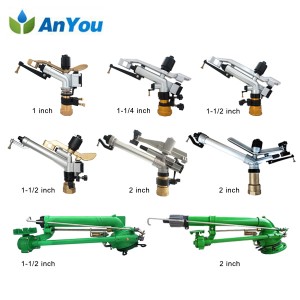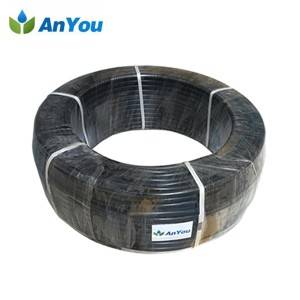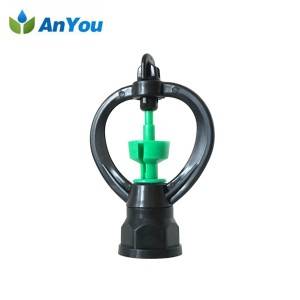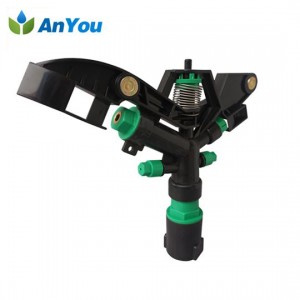
Water and fertilizer management is an important part of the greenhouse pepper production process. However, due to the extensive management of water and fertilizer in the greenhouse planting of peppers in the greenhouse, the humidity in the greenhouse is too large, the nitrogen fertilizer is used too much, and the medium and trace elements are insufficient, resulting in aggravation of pests and diseases in the greenhouse, and rising production costs. The benefits are declining. Scientifically and effectively couple the water and fertilizer links in the production process. According to the water demand, fertilizer requirement, soil moisture and nutrient status of the pepper, the water and nutrients are directly and accurately delivered to the root of the pepper by a drip irrigation system with a small flow rate. The surface of the soil nearby. Because the technology carries out scientific and reasonable water and fertilizer allocation, saves water and fertilizer, improves the field environment, reduces the occurrence of pests and diseases, and effectively improves the quality of pepper while increasing the yield. The output of 667m2 increased by more than 20%, the profit increased by more than 20%, and the coverage of “three new” technology increased by 26.3%. At the same time, farmers have applied a large number of “three new” technologies, which have greatly reduced the production cost, and the cost-effectiveness is obvious. The net increase of 667m2 is more than 2,600 yuan.
1. Variety selection
The long-season planting of pepper solar greenhouse has relatively strict requirements on varieties, low temperature tolerance, low light resistance, strong continuous results, strong growth potential, not easy to premature aging, and the same fruit size, good commodity quality, excellent quality, disease resistance and high yield. Meet the needs of the consumer market.
2. Cultivate strong seedlings
2.1 sowing seedlings
The long-season planting mode of the greenhouse in the solar greenhouse is generally in the late August and early September, and the seedlings are selected from 50-hole or 72-hole trays and special seedlings. The seeds were sun-dried for 1-2 days before sowing to increase the germination potential and germination rate. The dried seeds were placed in warm water at 55 ° C for stirring and scalding. When the water temperature drops to 30 ° C, the seeds are transferred to 1000 times potassium permanganate solution or 10% trisodium phosphate solution, soaked for about 30 minutes, rinsed, and then placed in clean water for 4-6 hours. Remove the seeds, wash away the seed coat mucus, drain and wait for the seed. Since the temperature is suitable at this time, the emergence of the seedling is easy, and generally no germination is required.
2.2 seedbed management
After emergence, the main purpose is to cool down and moisturize. Keep the seedbed not dry or wet. If the substrate is white, choose to replenish water in the morning and evening. During the nursery period, the temperature is high at night, the seedlings are easy to grow, and the ventilation management must be strengthened. During the seeding period, the daily temperature is 28-32 ° C and the night temperature is 18-20 ° C. When half of the seedlings are topped, the bed film is immediately removed, and the temperature is gradually lowered, and the daily temperature is maintained at 25-28 ° C. The night temperature is 15-20 ° C. After the cotyledons are unfolded, the seedling distance should be opened in time to prevent the length of the seedlings. At the trefoil stage, pay attention to refining seedlings and promote new roots. At this time, keep the daily temperature at 20-25 °C and night temperature at 15-18 °C. Use the method of uncovering the sunshade net to carry out temperature control. The second seedling period generally does not require topdressing. For fat symptoms, 0.2% potassium dihydrogen phosphate solution can be sprayed on the foliage. In the seedling stage, the weeds inside and outside the seedbed should be removed in time to reduce the source of insects.
3 Preparation before planting
3.1 high temperature shack
Choose to rotate with non-solanth crops. After the harvest of the front hoe, the Tiantong is cleaned in time to make the broken mulch film harmless. At the same time, deep-turn the soil for high-temperature shack: use the high temperature during the period from July to August, fill the water, lay the mulch, cover the shed film, so that the temperature in the shed indoors before and after noon is as high as 60-70 ° C, the surface temperature reaches 50 ° C Above, maintaining about 10d, can effectively kill the bacteria and eggs in the soil, and the organic fertilizer can be fully decomposed.
3.2 Apply enough base fertilizer
The pepper is planted in a long season. After the planting, the growth period is up to 8 months. The target yield per 667m2 is 8000-10000 kg. It is necessary to fully consider the quick-acting and long-lasting nature of the base fertilizer. It should be mainly applied to the soil and applied deep into the soil. 667m2 is fully decomposed high-quality organic fertilizer 7000-8000kg, ternary compound fertilizer 80kg, biological fertilizer 150-200kg.
3.3 Site preparation
After deep-turning the soil, the sorghum is made from north to south, with a width of 70-80 cm, a height of 15-20 cm, and a walkway width of 30 cm. After the surface is flattened, the white mulch is covered, which is beneficial to the moisturization of the soil in the early stage and the insulation and dehumidification in the winter shed.
3.4 Installation and use of drip irrigation facilities
3.4.1 Installation of drip irrigation facilities The integrated water and fertilizer system generally consists of four parts: water supply system, fertilizer supply system, filtration mixing system and irrigation system. The water supply system consists of water supply network, filters and valves. The irrigation area is designed according to the water source. Generally, the drip irrigation 667m2 is irrigated at a rate of 8-20m3. Fertilizer systems include fertilisers, obstruction valves, pressure gauges, inlet valves, and outlet valves. The filtration mixing system is mainly composed of a sieve and a filter. The irrigation system consists of a field pipe network and a drip irrigation line. The drip irrigation belt is made of anti-aging plastic formula made of PE hose, mechanically perforated, the main pipe diameter is 40mm, the pipe diameter is 16mm, and the working pressure is 30-60kpa. The equipment should be installed and laid before the transplanting of the pepper seedlings. When installing, the branch pipe should be laid on the surface of the shovel in the direction of the shovel, so that the small hole of the drip pipe is upward, and then the main pipe and the shovel are laid vertically on the ground. The main water pipe and the branch pipe are connected, and finally the venturi fertiliser is connected with the main water pipe. The manure applicator is installed in parallel with the water supply pipe control valve, and the main pipe and the branch pipe are knotted and sealed at the tail.
3.4.2 Use and maintenance of drip irrigation equipment When the venturi fertiliser is used, the control valve is closed, causing a certain pressure difference between the control valve before and after the control valve, so that the water flows through the branch pipe of the venturi fertiliser, and the water flow is generated through the venturi. Vacuum suction, the fertilizer solution is evenly sucked from the open fertilizer tank to the pipe system for fertilization. In order to ensure smooth fertilization speed and uniform fertilization, the fertigation system should be allowed to run normally for 20-30 minutes, then the fertilizer should be injected into the fertilization tank, and the fertilizer should be completely used up before stopping. The irrigation should not be stopped before the fertilization is completed. In the operation of the equipment, if there is water stoppage or power failure during the fertilization process, the connection between the fertiliser tank and the main water pipe shall be disconnected in time to prevent the fertilizer from flowing backward. Strictly operating according to requirements and strengthening daily maintenance are the key to ensure the effect of fertilization and extend the service life of the system. The long-term use of drip irrigation equipment will cause the deposition of fertilizer residue. The fertilizer tank and filter should be cleaned and drained in time after each fertilization. , every 20-30min. At the end of the annual irrigation season, the pipeline must be fully inspected and repaired, and the ground capillary tubes should be rolled into a disk shape for label storage.
4 timely colonization
When the seedlings are 8-10 cm high, 4-5 true leaves, short internodes, and thick stems, they can be colonized, usually in the middle and late October. Due to long-term planting, the density is smaller, the row spacing is 80-90cm, the plant spacing is 40-45cm, double row planting, and 667m2 planting 2500-3000 plants. It is planted on sunny or cloudy days, and the seedbed water is poured 1d before planting. Planting and watering the roots while planting. After planting, each plant is filled with 100 mL of a mixture of carbendazim and Jinledomir to prevent diseases such as blight and root rot, and then immediately spray the seedling water.
Baoding Anyou Industry Co.,Ltd
www.anyouirrigation.com
Post time: 01-07-2019








